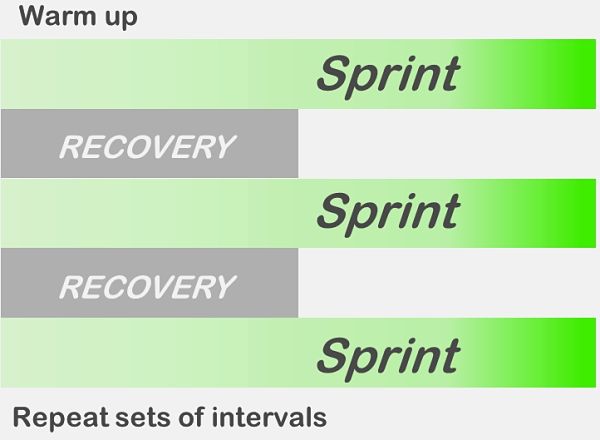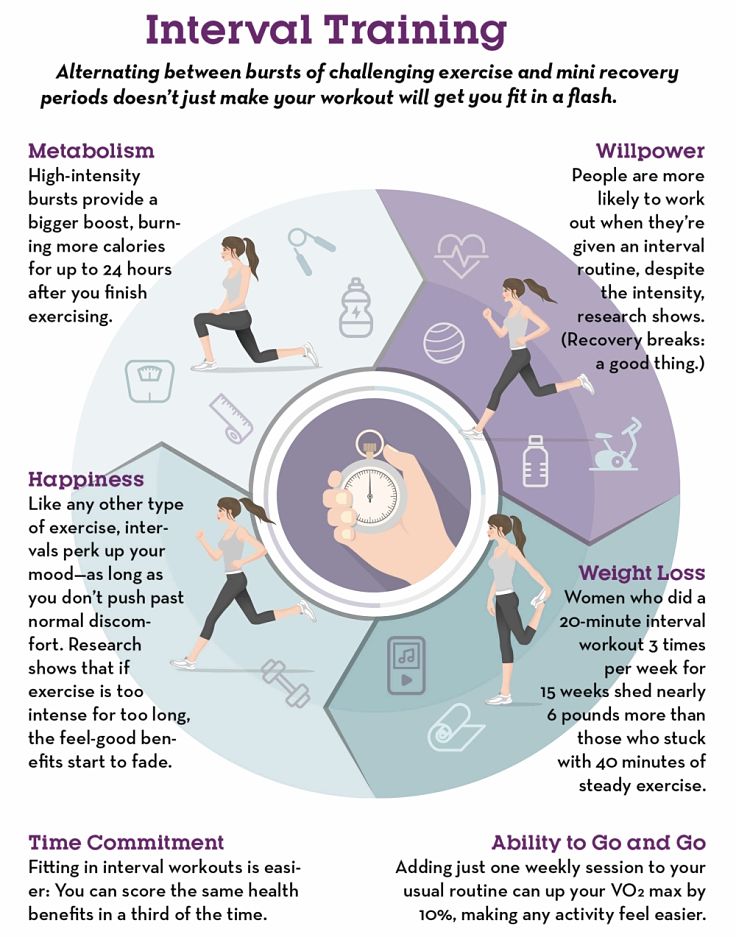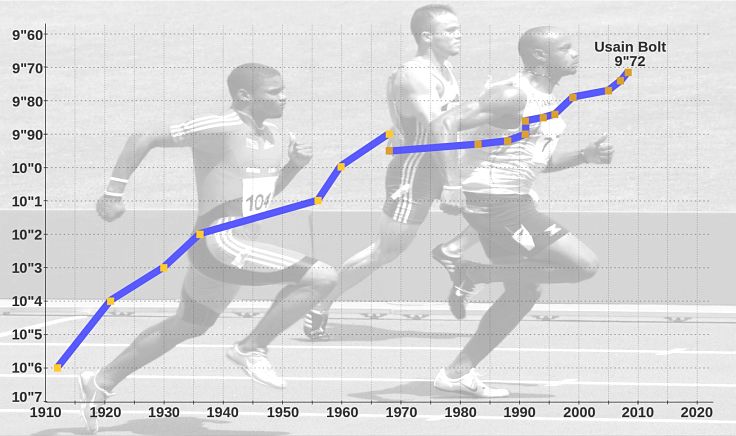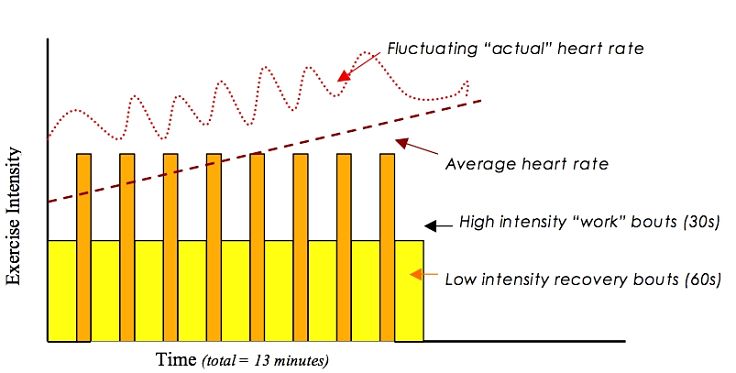Benefits Interval Training, Best High Intensity Workout Programs
Most people are keen to know how much exercise they should do to stay fit and healthy. Most people are busy and find it hard to squeeze exercise routines into a pack daily schedule. For these people the question is what is the minimum time I need to exercise and how can I get maximum benefits from these short bursts of activity. A research study conducted by a group of Canadian scientists have attempted to answer the basic question "How little exercise do we really need to stay fit?" and "Will Short term High Intensity Interval Training Suffice". The answer from the study is that a surprisingly small amount of training, at moderate intensity is generally adequate. The study involved several group of volunteers. One group included healthy middle-aged men and women who were sedentary. A second group included middle-aged and older patients who had been diagnosed with cardiovascular disease. At the outset the peak power and maximum heart rate on a stationary bicycle was tested for each of the groups of volunteers.
The researchers were interested in the benefits of short periods of high intensity training routines on improving the fitness of both groups. The idea was it see if short session of 15-20 minutes may be enough to improve fitness using moderate intensity interval training techniques.
What is Interval Training
Interval training involves a series of short, sharp bursts of strenuous activity with rest periods in between. The advantage of interval training is that it generates work loads much higher than the sustained aerobic levels. Heart rates and breathing rates are greatly increased. It has been shown to improve aerobic fitness much faster than sustained activity at peak aerobic levels. In a sense you are telling your body that you want it to work at a much higher rate. You impose that rate in short bursts and this helps to improve fitness. The high intensity part is generally referred to as Sprint Intervals, which can be defined in terms of a time or a distance. They can be as short as 15-30 seconds in high intensity activities like extreme High Intensity Interval Training ( HIIT) or as long as 15-20 minutes for aerobic interval training. The recovery periods are called Rest Intervals, but the athletes do not stop exercising, but generally slow down to a jog at a much lower intensity which allows the body to recover from the sprint. The length of these rest intervals vary depending on fitness. During this interval training your body does not work at a constant rate and so does get used to one setting as with most aerobic fitness routines. The other advantage is that the total duration of the workouts can be very short, such as 15-20 minutes, and yet the number of calories burnt may be equivalent to the amount of calories burnt during an hour of regular exercising. A typical HIIT workout design involves low-intensity (rest) intervals set at about 40-50% of your maximum heart rate. The high-intensity intervals should be set at an intensity of 80-100% of your maximum heart rate. A common HIIT workout schedule consists of 30 seconds of high intensity, followed immediately by either 30, 60, or 90 seconds of low-intensity intervals. HIIT is popular for running and sprinting training and is used to increase the fitness of long distance runners. It is also used for running on treadmills, bicycle riding and various gym equipment.
HIIT is a fabulous way to get in shape fast and stay in shape. Many people find it more interesting that running or cycling at the same pace for 30-60 minutes. The way it works is that your adapts to deal with the high work rate by increasing oxygen intake and muscle fitness. Also the bursts of anaerobic working also stimulates increases in fitness. HIIT is all about changing it up and counteracting the looming “plateau effect” which slows down your fitness development.
The Canadian researchers were primarily interested in studying the effectiveness of very short periods of exercise and so the routines they set for the groups were exclusively intervals. For years, various organizations such as the American Heart Association have recommended that people undertake at least 30 minutes of continuous, moderate-level exercise, such as a brisk walk, run or cycle ride about five times a week, for overall good health. However many people claim they don't have time even for this period periods of exercise. By incorporating high intensity interval training technique the researchers hoped to be able to reduce the time required even further, but get maximum benefits. But what has not been well studied is how well most people can cope with the requirements of intervals training rather than a longer period of moderate effort.
Various previous studies have shown that six weeks of 10-15 minute HIIT routines, that involved 30 seconds of all-out effort at 90-100 % of maximum heart rate boosted fitness by the same amount as an hour of steady cycling. The time involved for the HIIT program was only 10-20% of that for the steady exercise program.
For the Canadian study, where most of the subjects were relatively unfit at the start the researchers developed a less strenuous version of the HIIT program:
- High-Intensity - one minute exercise at about 90 percent of a person’s maximum heart rate (this can be estimated by subtracting your age from 220),
- Low-Intensity - one minute of easy paced recovery.
- The periods of strenuous effort and recovery were repeated 10 times, for a total session time of 20 minutes.
The researchers found that after several weeks of practicing it, both groups of initially unfit volunteers showed significant improvements in their fitness and health and test to assess the functioning of their blood vessels and heart. The results were especially significant for the in the cardiac patients who showed improvements in circulation and the performance of their blood vessels and heart. The short bursts of high intensity activity are not risky for these patients because the bursts only last thirty seconds. The other surprise was that the cardiac patients embraced the exercise routine.
The researchers recommend that people who have the time for regular 30-minute or longer endurance exercise training and are happen with them should stick to these regimes. But if you struggle to find the time for this have a serious look at interval training. If you have health issues, check with your doctor first. All it requires is sprinting uphill, rapidly pedaling a stationary bicycle, climbing stairs or doing 100m wind sprints for 30-60 seconds, . The aim is to raise your heart rate to about 90 percent of your maximum level. Pedal or jog easily for a minute as the rest period. Repeat the set of high intensity activity and low intensity rest periods about ten times. This is a very stimulating way to exercise and it can be completed within 15-20 minutes. Repeat this every second day, perhaps 3-4 times a week.






